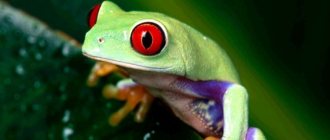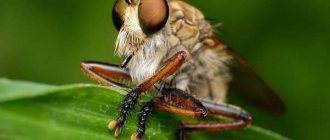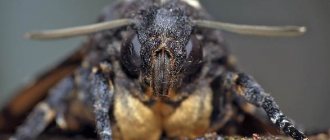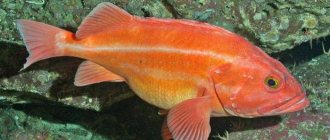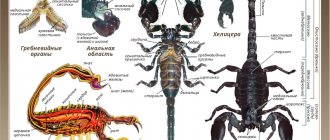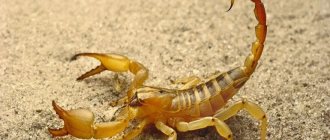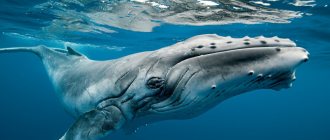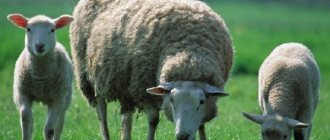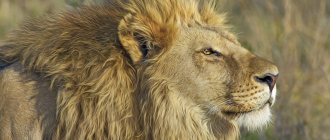External structure and nutrition of arachnids
In spiders, the body segments merge to form the cephalothorax and abdomen, separated by an interception.
The body of arachnids is covered with a chitinized cuticle and underlying tissue (hypodermis), which has a cellular structure. Its derivatives are arachnoid and poisonous glands. The venom glands of the cross spider are located at the base of the upper jaws.
A distinctive feature of arachnids is the presence of six pairs of limbs . Of these, the first two pairs - the upper jaws and the tentacles - are adapted for capturing and grinding food. The remaining four pairs perform the functions of movement - these are walking legs.
During embryonic development, a large number of limbs are formed on the abdomen, but later they are transformed into arachnoid warts , opening by the ducts of the arachnoid glands. Hardening in air, the secretions of these glands turn into spider threads, from which the spider builds a trapping network.
After the insect has fallen into the net, the spider envelops it in a web, plunges the claws of its upper jaws into it and injects poison. Then he leaves his prey and hides in cover. The secretion of the poisonous glands not only kills insects, but acts as digestive juice. After about an hour, the spider returns to its prey and sucks out the semi-liquid, partially digested food. From a killed insect, only one chitinous cover remains.
general information
Arachnids, or arachnids (lat. Arachnida), belong to the class of arthropods. The variety of their species belongs to the Cheliceraceae subtype. Modern science has described about 100 thousand species of arachnids. They are divided into 11 squads. The most common representatives are spiders, scorpions, and ticks. But there is disagreement about the classification of mites. Some acarologists also distinguish separate orders : parasitiform, acariform and the order of harvest mites (message from Wikipedia).
Based on the type of nutrition, these representatives of the fauna are classified as predators, since their food is mainly insects and other arthropods. There are scorpions that do not disdain lizards, small rodents, and sometimes eat their weaker relatives.
Only a few species of ticks, as well as jumping spiders, feed on plant matter. There are ticks that feed only on the blood of people and animals.
Arachnids live in self-built nests or burrows and are active mainly at night. During the hunt, they grab prey with the help of tentacles and prick it with a poisonous sting, paralyzing it. Spiders, in addition to poison, inject digestive juice. They wait for about an hour, and then suck out the contents of the victim, after which only the chitinous shell remains. This type of digestion is called external.
Internal structure of arachnids
The respiratory system of the cross spider is represented by pulmonary sacs and trachea. The pulmonary sacs and trachea of arachnids open outwards with special openings on the lateral parts of the segments. The pulmonary sacs contain numerous leaf-shaped folds in which blood capillaries pass.
The trachea is a system of branched tubes that connect directly to all organs where tissue gas exchange takes place.
The circulatory system of arachnids consists of a heart located on the dorsal side of the abdomen and a vessel through which blood moves from the heart to the front of the body. Since the circulatory system is not closed, blood returns to the heart from the mixed body cavity (mixocoel), where it washes the lung sacs and trachea and is enriched with oxygen.
- Weasel
- Whale shark
- 34 facts about raccoons
- Maned wolf
- Nettle
- Elk
The excretory system of the cross spider consists of several pairs of tubes (Malpighian vessels) located in the body cavity. Of these, waste products enter the posterior intestine.
The nervous system of arachnids is characterized by the fusion of nerve ganglia with each other. In spiders, the entire nerve chain merges into one cephalothoracic ganglion. The organ of touch is the hairs covering the limbs. The organ of vision is 4 pairs of simple eyes.
General characteristics of arachnids
Arachnids are a large group of exclusively terrestrial chelicerates, numbering over 36,000 species. Coming onto land and settling along it, arachnids acquired various adaptations to very diverse living conditions. We will find arachnids in the field, forest, garden and vegetable garden, in courtyards, in human dwellings, etc. There are many parasitic forms among them. Representatives of various orders of arachnids - scorpion, telephon, false scorpion, harvestman, salpuga, spider and tick.
External structure
Like typical chelicerates, the body of the vast majority of arachnids consists of a fused cephalothorax, bearing six pairs of limbs, and an abdomen. The abdomen, unlike horseshoe crabs, does not bear real limbs. Only their rudiments or limbs, transformed into special organs, are found.
Antennae or antennules are absent. The eyes are simple. The first pair of limbs of the cephalothorax is located in front of the mouth. These are short chelicerae, consisting of 2-3 segments, ending in a claw, hook or stylet. Chelicerae are homologous to the second antennae of crustaceans. Behind the mouth there is a second pair of limbs - the pedipalps. Their bases have chewing processes, and the remaining segments can serve as tentacles. Pedipalps can turn into walking legs or food-grasping organs - powerful claws (scorpions, pseudoscorpions). All arachnids typically feed on liquid food, so the anterior section of the digestive system is a sucking apparatus.
In connection with the arrival on land, arachnids transformed some organ systems of the primary aquatic chelicerates and new ones emerged. In some groups, both old and newly acquired organs exist simultaneously. Thus, the respiratory organs of arachnids are the lungs, located in pairs on the abdominal segments. Their origin and development prove that they are modified gill legs of aquatic chelicerates. The new respiratory organs of arachnids are tracheas - blind invaginations of the outer integument.
The excretory organs are also dual in nature. They are represented by coxal glands (coelomoducts) that are more ancient in origin and newly emerged Malpighian vessels.
The differences between representatives of arachnid orders lie in the degree of segmentation of the body, primarily the abdomen, and in the specialization of the cephalothorax limbs, adapted to perform various functions. The body of scorpions is most strongly segmented. It consists of a small fused cephalothorax and abdomen, represented by 12 segments, of which 6 wider segments constitute the anterior belly, or mesosoma, and the remaining 6 narrower ones constitute the posterior abdominal, or metasoma. Attention should be paid to the similarity in the body dismemberment of scorpions and the extinct gigantic crustacean scorpions. In both cases, the metasoma is represented by six segments. In other groups of arachnids, the posterior part of the abdomen, the metasoma, contracts, and the abdomen shortens. In terms of the degree of dissection of the abdomen, flagipods and pseudoscorpions are close to scorpions, in which, however, the abdomen is not externally divided into anterior and posterior abdominals. In some respects, salpugs are even more dissected animals than scorpions. In addition to the articulated abdomen, which has 10 segments, salpugs have two free thoracic segments that are not part of the fused head. The articulated abdomen of harvestmen also consists of 10 segments, which are not separated by a deep constriction from the cephalothorax, as in real spiders. In arthroplasty spiders (four-lunged) the abdomen consists of 11 segments, and in higher spiders it consists of 6, while the abdominal segments are completely fused. In ticks, the number of abdominal segments is reduced to 7, and in some - to 4-2. Moreover, in most ticks not only are all segments of the abdomen fused, but it is also impossible to distinguish between the main sections - the cephalothorax and abdomen, which form one whole. Thus, it is obvious that the evolution of various orders of arachnids went in the direction of reducing the number of abdominal segments and their fusion, reducing the degree of overall body dismemberment.
In representatives of various orders, the chelicerae and pedipalps have undergone the greatest changes, and the least changed are the four pairs of walking legs, which have turned into a jointed leg ending in a tarsus with claws.
In scorpions, pseudoscorpions and harvestmen, the chelicerae end in small claws. They play the role of the upper jaws, and, in addition, animals hold prey with them. In salpugs, the chelicerae have turned into powerful claws, adapted for grasping and killing prey. In real spiders, the chelicerae are claw-shaped and consist of two segments. The main segment is very swollen, and the second has a claw-like shape. Near its pointed end, the duct of the poisonous gland opens, located at the base of the chelicera. In a calm state, this segment is applied to the main segment and partially fits into a special groove. With two chelicerae, spiders grab and kill prey, releasing the secretion of the poisonous gland into the wound. Finally, in mites, chelicerae and pedipalps form a piercing-sucking (dog tick, etc.) or gnawing-sucking (scabies mite, barn mite, etc.) oral apparatus.
The second pair of limbs - pedipalps - in salpugs differ little from walking legs, and in scorpions and pseudoscorpions they have turned into grasping organs - claws. In female spiders, the pedipalps play the role of jaws, since they have a chewing plate at the base, and at the same time they are oral tentacles. Male spiders have a swelling on the last segment of the pedipalp, which is a device for fertilizing females. During the breeding season, a special pear-shaped appendage develops on this segment with an elongated end, on which there is an opening leading into a narrow canal, ending inside this organ with an expanded ampulla. Using this device, male spiders collect sperm inside the ampoule and, during mating, inject it into the genital opening of the female.
Abdominal limbs, as such, are absent in all arachnids. However, some of them have survived in a greatly modified form. The rudiments of the abdominal limbs are located only on the mesosoma (anterior six segments). The most complete set of them is preserved in Scorpios. On their first abdominal segment, on which the genital opening is located in all arachnids, there are small genital operculums, and on the second segment there are special comb-like appendages of unknown purpose. The next four segments contain a pair of pulmonary sacs. Four-lunged spiders and flagellated spiders each have two pairs of lungs on the first two abdominal segments; in two-lunged spiders there is one pair of lungs (on the first segment), and on the second, tracheas develop instead of lungs (not connected to the limbs). All spiders develop arachnoid warts on the third and fourth segments - transformed abdominal limbs of these segments. Some groups of small arachnids (part of mites) retain rudiments of abdominal limbs on the first three segments, the so-called coxal organs.
Integuments and skin glands
The body of arachnids is covered with a chitinous cuticle, which is secreted by a layer of flat cells of the hypodermis. In most forms, chitin is poorly developed and the integument is so thin that it wrinkles when dry. Only in some arachnids (scorpions) the chitinous cover is more dense, as it contains calcium carbonate.
Skin (hypodermal) formations include various glands: poisonous, arachnoid, odorous glands of harvestmen, frontal and anal glands of flagellates, etc. Not all arachnids are poisonous. Venom glands are found only in scorpions, spiders, some pseudoscorpions and some ticks. In scorpions, the posterior abdomen ends in a curved caudal spine. At the base of this needle there is a pair of sac-like glands that secrete a poisonous secretion. At the very end of the needle, the openings of the ducts of these glands are placed. Scorpios use this device in a unique way. Having grabbed the prey with the claws of the pedipalps, the scorpion bends its posterior abdomen onto its back and strikes the victim with a needle, from which it releases poison into the wound. In spiders, venom glands are located at the base of the cholicerae, and their ducts open on the claw of the chelicerae.
Arachnoid glands are found mainly in representatives of the order spiders. Thus, the female cross spider (Araneus diadematus) has up to 1000 arachnoid glands of various structures in its abdomen. Their ducts open with tiny holes at the ends of special chitinous cones, which are located on the arachnoid warts and partly on the abdomen near them. Most spiders have 3 pairs of arachnoid warts, but only two of them are formed from the abdominal legs. In some tropical spiders they are multi-segmented.
Pseudoscorpions and spider mites also have arachnoid glands, but they are located in the chelicerae in the former and in the pedipalps in the latter.
Digestive system
Most arachnids are predators, some (ticks) are parasites of animals and plants. Arachnids feed only on semi-liquid food. A number of features in the structure of the digestive apparatus are associated with this method of nutrition. Either completely liquefied food or food containing only very small solid particles is sucked into the intestines of arachnids.
The digestive system consists of three main sections - the foregut, midgut and hindgut.
The foregut with its glands is an organ adapted for liquefying and absorbing food. In spiders, the mouth leads into the pharynx, which is followed by a thin esophagus, which flows into a sucking stomach, driven by muscles running from it to the dorsal integument of the cephalothorax. These three sections (pharynx, esophagus, sucking stomach) are parts of the anterior ectodermic gut and are lined from the inside with chitin. The ducts of the salivary glands open into the pharynx, secreting a secretion that dissolves proteins. Having pierced the integument of the prey, the spider lets saliva into the wound, which dissolves the tissues of the victim, and then sucks out the semi-liquid food. From the sucking stomach begins the endodermic midgut, in which food is digested and absorbed.
The midgut, located in the cephalothorax, forms five pairs of blind glandular projections extending forward to the head end and the bases of the walking legs. Blind outgrowths of the midgut are very characteristic of many arachnids: ticks, harvestmen, etc. They increase the capacity of the intestine and its absorption capacity. In the abdomen, the ducts of the highly developed paired liver flow into the midgut. The liver is a derivative of the midgut. It consists of many thin tubes that not only secrete digestive enzymes, but are also capable of digesting and absorbing nutrients. Intracellular digestion can occur in liver cells. Next, the midgut forms an expanded section, the so-called rectal sac or cloaca, into which the excretory organs, the Malpighian vessels, open. From the rectal sac comes the ectodermic hindgut (rectum), ending in the anus.
The digestive system of other arachnids varies in detail, but is generally structured similarly.
Respiratory system
Due to their land-based lifestyle, arachnids breathe atmospheric air. The respiratory organs of arachnids can be the lungs and trachea. At the same time, it is curious that some arachnids (scorpions, flagellated and four-legged spiders) have only lungs, others (false scorpions, salpugs, harvestmen, and partly ticks) have only tracheas, and finally, still others (most spiders) have both lungs and tracheas.
Four pairs of lungs in scorpions are located on the 3rd-6th segments of the anterior abdomen. On the ventral side, 4 pairs of slit-like openings, stigmata, leading to the lungs are clearly visible. The arachnid lung is a sac-like organ lying on the underside of the abdominal segments. The stigma leads into the lung cavity, which in the anterior part of the pulmonary sac is blocked by plates lying one above the other, which are outgrowths of the lung wall. Between them there are narrow cavities into which air enters. Blood circulates inside the pulmonary plates, and thus an exchange of gases occurs between the blood and the air filling the lungs. Most spiders have one pair of lungs (two-lunged spiders), some have two pairs (four-lunged spiders).
Comparison of the structure of the lung with the structure of the abdominal limbs and gills of horseshoe crabs indicates their great similarity. The position of the lungs on the underside of the abdomen, in the places where the abdominal limbs would be, increases this resemblance. Data from comparative anatomy and embryology fully support the assumption that the lungs of arachnids were formed from the gill legs of fossil merostomes. The transformation of an abdominal limb with gills into a lung can be imagined as follows. A depression formed in the abdominal wall of the body, to which the gills were adjacent, and the lamellar limb grew attached to the integument on the sides. The cavity thus formed communicated with the external environment in the rear part through a narrow, slit-like opening. From the gill filaments, attached only at the wide base to the limb, pulmonary plates with their rather complex structure were formed.
In most arachnids, the trachea serves as the respiratory organ (salpugs, harvestmen, etc.), and in bipulmonary spiders, the trachea exists along with the lungs. The tracheae begin with spiracles (stigmas), usually on the underside of the abdomen. The spiracles can be from one unpaired (in some spiders) to three pairs (in salpugs). The spider's spiracle is located on the abdomen just in front of the arachnoid warts. It leads into two pairs of tracheal tubes, lined from the inside with a thin layer of chitin, which in some arachnids (salpugs, harvestmen and some spiders) forms spiral thread-like thickenings that do not allow the tubes to collapse.
In salpugs, harvestmen and other arachnids, in which the trachea is the only respiratory organ, they form a very complex system of branching tubes that penetrate into all parts of the body and limbs. Some small arachnids lack special respiratory organs; they breathe over the entire surface of the body (a number of species of mites, etc.).
Circulatory system
The circulatory system of arachnids exhibits a metameric structure. Scorpions and most flagipes have a long, tubular heart bearing seven pairs of ostia. In spiders, the number of pairs of ostia is reduced to five or even two. In other arachnids the heart is shorter, and in ticks it is a small vesicle.
Arterial vessels extend forward, backward and to the sides from the heart, and the degree of development and branching of arterial vessels is very different and is directly dependent on the structure of the respiratory organs. Scorpions, which have lungs localized in a specific location, and spiders, whose tracheas are slightly branched, have the most highly developed system of arterial vessels. In salpugs, harvestmen and other forms that breathe by trachea, the system of blood vessels is poorly developed and sometimes absent. This is explained by the fact that with a sufficiently strong branching of the trachea, the exchange of gases occurs directly between the trachea and the tissues of the animal and the blood takes almost no part in the transportation of gases. This is a very interesting example of correlation in the development of various organ systems, even more pronounced in insects.
The degree of development of the circulatory system also depends on the size of the animal. In ticks it is the least developed: some ticks have only a bladder-shaped heart, while others do not have it.
Excretory system
The main excretory organs in arachnids are completely new organs associated with the intestines - the Malpighian vessels. They are one or two pairs of thin tubes, more or less branched and located on the abdomen. These tubes are protrusions of the midgut, i.e. they are of endoderm origin. The Malpighian vessels, blindly closed at the free end, open into the rectal bladder, or cloaca, the last section of the midgut. Guanine, the main excretion product of arachnids, accumulates in their lumens.
Along with the Malpighian vessels, arachnids also have other excretory organs - coxal glands. There may be one or two pairs. They open outward most often at the base of the first and third pairs of walking legs. Typically, the coxal glands consist of a coelomic sac, a nephridial canal, sometimes expanding to form the bladder, and an excretory opening. These organs are apparently homologous to the coelomoducts of annelids and correspond to the coxal glands of horseshoe crabs. In adult arachnids, the coxal glands are usually reduced and do not function; they are replaced by Malpighian vessels.
Nervous system and sensory organs
The nervous system of arachnids is represented by the ventral nerve cord typical of all arthropods. Arachnids are characterized by a significant concentration and fusion of groups of nerve ganglia. The lowest degree of convergence and fusion of ganglia is observed in scorpions. They have a paired suprapharyngeal ganglion (brain), connected by connectives to the cephalothoracic ganglion mass innervating the limbs (2-6 pairs). Next come the seven ganglia of the ventral nerve cord. In salpugas, flageopods and pseudoscorpions, only one of the abdominal ganglia remains free, and the rest join the general ganglion mass. In spiders, all ganglia of the ventral nerve chain form a single subpharyngeal ganglion. In ticks, fusion of the subpharyngeal node is also observed with the brain.
The sense organs include the organs of touch and vision. The organs of touch are the hairs that cover the limbs, especially the pedipalps. The eyes of arachnids are simple (not compounded), usually several pairs. Spiders have 8 eyes located on their heads in two rows.
Sex organs and reproduction
Arachnids are dioecious, and sexual dimorphism can be quite pronounced (in spiders and ticks). In spiders, males are often much smaller than females, and their pedipalps are transformed into a copulatory apparatus.
The genital organs of all arachnids consist of paired glands or an unpaired gland that bears traces of the fusion of paired glands. Females have an unpaired gland in the form of a “frame with crossbars” and paired oviducts. Males have paired testes with characteristic crossbars and a copulatory apparatus.
Female spiders have paired spermatic receptacles that open with independent openings in front of the unpaired genital opening on the first abdominal segment. In addition, each of them communicates through a special canal with the uterus, formed by the fusion of the terminal sections of the oviducts.
Using the process of the copulatory apparatus of the pedipalps, spiders inject sperm into the spermatheca of females through their external openings. From there, the sperm enters the uterus, where fertilization occurs.
Partnerogenesis is characterized by ticks. Some species of scorpions are viviparous, and the development of fertilized eggs occurs in the ovaries. Newborn scorpions do not leave their mother, and she carries them on her back for some time.
Development
The development of fertilized eggs in most arachnids is direct. Only in ticks, due to the small size of the eggs, development occurs with metamorphosis. Eggs in most cases are rich in yolk, and crushing is either superficial (spiders, harvestmen, salpugs, mites) or discoidal (oviparous scorpiopes).
In viviparous scorpions, the embryos developing in the mother's ovary consume protein substances secreted by the female's organs. Therefore, despite the small supply of yolk in the eggs of viviparous scorpions, they are characterized by complete crushing.
During embryonic development, arachnids develop a larger number of segments than are present in adult forms. The rudiments of abdominal limbs appear on the abdominal segments, which are subsequently reduced or transformed into other organs.
How do spiders feed?
Spiders are obligate predators because they catch prey on their own, but they do not have teeth. As a rule, the victim herself falls into the web and the spider has to use its poison to eat the prey.
The peculiarity of the poison is that it dissolves the flesh of the victim, making it a kind of broth. In addition, the poison serves to immobilize the victim. As a rule, all spiders are poisonous, but few pose a danger to humans.
Features of reproduction
During the process of active growth, spiders from time to time shed their tight shell, which consists of a chitinous structure. They gradually acquire a new, stronger one.
Over the entire period of their life, they can molt up to 10 times . Spiders are heterosexual individuals, with the female being much larger than the male.
The mating period lasts quite a long time, its season begins in mid-autumn and lasts until early spring. At this time, the male fills the bulbs, which are located at the ends of the pedipalps, with sperm, then he goes in search of the female.
After performing the “mating dance” and fertilization, the male leaves and dies in the subsequent period.
As soon as 2.5 months have passed, the female lays eggs. After 35 days, spiderlings hatch from them and live in the web until the first molt. Sexual maturity in females occurs at the age of 3-5 years.
Reproduction of arachnids
All arachnids are dioecious. The female cross spider lays eggs in the fall in a cocoon woven from a silky web, which she places in secluded places (under stones, stumps, etc.). By winter, the female dies, and spiders emerge from eggs overwintered in a warm cocoon in the spring.
Other spiders also take care of their offspring. For example, a female tarantula carries her young on her back. Some spiders, having laid eggs in a web cocoon, often carry it with them.
Among the arachnids there are species whose poison is dangerous for humans and farm animals (karakurt, scorpion), human parasites (itching itch) and mites that carry pathogens that are painful to humans and animals (taiga tick, etc.).
Ticks
This order includes small and microscopic arachnids. They feed on both solid and liquid food. Some of them can cause significant damage to the crop by damaging grains and plants. There are species that are carriers of dangerous diseases.
The taiga tick lives in the Far East, but can also be found in the European part of the country. Males are 2mm in size and half the size of females. Their larvae parasitize small animals, gradually changing hosts. A grown tick can even move onto cattle.
Fig.3. Ticks
What types of spiders are there?
These arthropods are found in any living conditions, so they are found literally everywhere: in the ground, on trees, on bushes, in caves, etc. The only thing is that they cannot fly, although some species easily move through space on their webs. At the same time, arthropods can cover enormous distances.
Conventionally, spiders are divided into several groups. For example:
- On those living in burrows.
- Living on the surface of the earth.
- Living under bushes.
- Tree dwellers.
Tree spiders can be easily identified by the shape of their web, which resembles a target. Spiders that live in burrows use webs to secure the soil so that it does not collapse. Spiders that live on the surface of the earth form webs horizontally, using pieces of soil for reliability. Those that live under bushes weave webs in the form of huts, and they camouflage it with the help of branches and earth. Arthropods use all forms of webs as a signaling system, which signals that living creatures have been caught in the trap.
Interesting to know! The silverback spider is the only species that can live in water.
Habitat
Arachnids have adapted to land-air and aquatic habitats (both in fresh water bodies and in seas and oceans). They have also adapted to different climatic conditions. Therefore, their species are distributed throughout the globe, except in permafrost areas.
They prefer humid and hot climates rather than temperate or cold ones. For example:
- Jumping spiders live in different habitats - forests, deserts, mountainous areas, brick and stone walls of houses. The diversity of habitats indicates the widespread distribution of the species.
- Tarantula spiders settle in the crowns of equatorial trees and shrubs.
- Digger spiders (tarantulas) and other drought-tolerant species prefer arid areas and live in burrows up to 50 cm deep in large crevices in the ground.
- Haymakers (long-legged animals) occupy cellars, sheds, and dens abandoned by animals.
- Side-walking spiders constantly sit on flowers and patiently wait for hours for their prey to appear; other members of the family are found on the bark of trees or the forest floor.
- The silver spider lives in ponds and rivers with slow currents. He makes his home in water from cobwebs and fills it with air.
- Scorpio has settled on all landmasses, except for some areas of the Arctic, Antarctica and the New Zealand Islands. However, it still prefers warm, arid zones, which is why it is often called a desert animal.
Most species of mites live on the body of a living organism, and some live exclusively on cultivated plants.
Interesting classification
Everyone knows that there are lovers of large tarantula spiders who classify their favorites depending on their speed characteristics. For example:
- For Dummies" . These are slow-moving members of this species that many people like to film. They can sit quietly on the palm of a person and move extremely slowly.
- For the “advanced” . These arthropods move quite quickly, so it’s unlikely to be captured on video.
- For professionals . They move so quickly that it is unlikely to notice in which direction the arthropod disappeared.
If we take into account such speed characteristics, it is not difficult to imagine how many species humanity does not yet know about.
Insects and spiders
These two types of arthropods are often confused. But they have much more differences than they have in common. Among insects, there are those that eat meat and those that are vegetarians. Spiders are mostly predators.
Spiders are definitely not insects! More differences in the structure and behavior of insects and spiders in the article at the link.
Spider Anatomy
Spider eyes The number of eyes is not an indicator of good vision. And spiders are a prime example of this.
Spider legsThe limbs perform not only a walking role. They help in hunting.
Spider reproductionThe method of reproduction of spiders is determined by their lifestyle and structural features.
Deadly poisonous spiders
As a rule, the majority of spider species are not dangerous to humans. The only problem is the presence of cobwebs in the most inappropriate places for humans. It should be noted that there are very poisonous species, the bites of which can be fatal to humans.
Deadly ones include:
- Black widow, as well as karakurt.
- Brazilian spiders.
- Brown recluse spider.
Black widows received such an interesting name due to the fact that after mating, if the male does not have time to leave, the female simply eats him. This dangerous species is distributed across almost all continents. They hunt their prey like a lasso using their web. The most famous in this regard is the American black widow, and as for the other representatives of this genus, they do not pose a serious danger.
North American black widow
On the North American continent, you can find up to 5 species of black widows, which are distinguished by their black body color with the presence of red spots on the abdomen.
It is important to know! Not all black widows are distinguished by their black body color.
The main distinguishing feature of this kind of spider is the presence of long legs, as evidenced by photographs of these dangerous animals. A spider bite is somewhat similar to a pin prick, but after 30 minutes muscle cramps appear that spread throughout the body. When serums had not yet been invented, up to 5% of victims died from their bites.
South American black widows
Representatives of this genus, living in South and Central America, have been studied very little. It is known that up to 8 species live in these places. This is due to the fact that spiders inhabit hard-to-reach places that are not so easy to reach.
Karakurt
These poisonous and dangerous arthropods live in Eurasia and Africa. There are up to 18 varieties of them, differing in varying degrees of danger. These are the same black widows, but they are called karakurt here. Black karakurt prefers to live in the southern regions of the continent, including Crimea and the Mediterranean. Due to the fact that global warming processes are observed on the planet, black karakurt was found in colder regions. As a rule, the ideal conditions for this arthropod to live are high temperatures above zero.
The image and name of the spiders do not correspond to reality, since these types of karakurts are distinguished by the presence of large red spots on the back. The coloring of spiders can vary due to the fact that Eurasian species often interbreed. As a result, black karakurt can have a pure black color.
Interesting fact! In nature, there is also a white karakurt. This type of karakurt is not so poisonous, but children and allergy sufferers can suffer from their bites. They live in the same conditions as black karakurts.
Australian black widow
The Australian black widow is considered one of the most poisonous representatives of arthropods. The black widow of this species is distributed on almost all continents. If you look from the back, the spider is brown in color, and the red spot is located on the lower part of the abdomen. This black widow's paws are yellow-brown, and black stripes can be seen on their bends. Of all the representatives of this genus, it is considered the least dangerous creature and poses a danger only to children and the elderly.
Brazilian wandering spider
Until recently, it was believed that black widows were the most dangerous species of spider, but by 2010, the most dangerous species became known - the Brazilian soldier spider. The genus of these most dangerous arthropods includes about 8 species. Their habitat is limited to the tropics of South and Central America. The most interesting thing is that spiders of this species build hunting webs and hunt in an active way.
Interesting fact! The last species of these arthropods was discovered only in 2001.
After being bitten by a soldier spider, paralysis and suffocation occur. As a result of poison entering the blood, in 85 cases out of 100, complete cardiac arrest occurs.
Recluse spider
This is one of the species that represents the North American continent. Body color can be either brown or dark yellow or gray. The size of the paws can range from 6 to 20 mm. The recluse spider has only 6 eyes, compared to the majority of species. This can be seen in the photo if you enlarge the image.
During the daytime it prefers to be in shelter, and goes out hunting in the dark. Despite the fact that he does not hunt with the help of a web, he still weaves a web, but uses it as a shelter. It can easily be found in a person’s home, so it can easily climb into bed. If you press him down, he will certainly bite.
Over time, a necrotic ulcer forms at the site of the bite, which can heal for several years. There are also fatal cases when a child or a person with weak immunity becomes a victim of a bite.
The importance of arachnids in nature and for humans
All living beings have their role.
Arachnids are part of the food chain. They themselves feed on small insects and often help people fight pests. The representatives of the family themselves also become food for larger individuals of their genus, arthropods, amphibians and various animals.
Some are enemies of man:
- spiders bite, causing pain and even more serious consequences;
- ticks are parasitic and carry various diseases;
- Scorpions prefer not to touch people and live separately, but if they get into a home or on things, they sting very painfully.
Spiders are moderately poisonous
As a rule, bites from these arthropods do not cause serious concern, but the bites result in swelling of the limbs, as well as severe pain. These spiders include:
- banana spiders,
- Tarantulas.
- Spider saku.
- Spider wasp.
The result of a bite from these arthropods is minor irritation, but too much venom can cause swelling of the limb.
Banana spider
These species have several names, depending on their habitat conditions. These are spiders that form extensive webs and are called large arboreal orb-weaving spiders. Depending on their habitat, they are called:
- Banana spiders.
- Large tree spiders.
- Gold weavers.
They grow up to 4 cm in length and have a paw span of up to 12 cm. They are not dangerous to people. In the event of a bite, the area becomes blistered and red, and all this is accompanied by a strong burning sensation. As a rule, the negative consequences of the bite disappear within 24 hours.
Tarantulas
Tarantulas are also called wolf spiders because they are members of this family. Of particular interest are the South Russian species and the Apulian tarantula. They are distinguished primarily by their substantial size, while they do not form trapping webs. They hunt at night, attacking various invertebrates and other spiders. They live in earthen burrows, up to 0.6 meters deep and up to 1.5 cm in diameter. The animals are distinguished by the gray color of their body, while the abdomen is covered with hair. The paws of the animal are of medium size.
Tarantulas prefer to live in hot regions of the Eurasian continent, in dry steppes. They are especially poisonous in the spring, when they have a lot of unspent poison. At the same time, for a tarantula to bite, you need to really want it. To anger an animal, you will have to pull it out of the hole, and then take it with your bare hands. It should also be remembered that tarantulas are capable of making vertical jumps if they are in danger. But this does not mean that he will attack a person, since at the first danger he will try to hide.
Interesting fact! In some countries, large tarantula beetles are called tarantulas.
Spider sak
This animal has another name - yellow heyracantium. Until recently, it was a representative exclusively of the southern regions, but as a result of global warming, it can be found in the central zone of our country. Its wide distribution was also facilitated by the spider’s partiality to the smell of oil. In this regard, he is a frequent visitor to the car engine. It is located between the engine mechanisms, and the ventilation system is covered with cobwebs.
The spider is not impressive in size, since it is only 1.5 cm in length maximum. The paw span is about 2.5 cm. The body is yellow-brown. A characteristic difference is the massive chelicerae with long extensions in the form of needles. They help the spider hunt at night and are very active. In the photo you can see what this spider looks like.
In the event of a bite from such an animal, soft tissue necrosis develops. In addition, the bite may be accompanied by nausea, severe headache, and high fever. The bite site becomes red and inflamed.
Argiope or wasp spider
Represents the family of orb-weaving spiders. Due to the unique body coloring, reminiscent of the body coloring of a wasp, the spider was named just that - the wasp spider. Several species occur in nature. Their habitat is limited to 52 degrees north latitude.
Interesting to know! The wasp spider is a species that can fly a considerable distance on its web.
It hunts by weaving round trapping nets. He does this at dusk. The main diet consists of flying insects. The bite is very painful, but not dangerous. As a rule, the bite site becomes inflamed.
Scorpio is a representative of arachnids
This is an interesting and unusual creature, distinguished by its rather terrifying appearance and speed of movement. The scorpion lives only on land in areas with a warm or hot climate, and has adapted to a wide variety of habitats - from humid forests and sea coasts to barren rocky areas and sandy deserts .
Externally, females and males are no different. Their elongated abdomen and part of the cephalothorax are clearly divided into segments. The trapezoidal cephalothorax has impressively sized claws with which they grab prey. Just below you can see a pair of tentacles (mandibles), used for gnawing and grinding food. And four pairs of limbs extend from the abdomen. The last segment of the abdomen ends in a capsule with glands that produce a poisonous liquid, and a needle through which the scorpion injects poison into the body of the prey.
The arachnid detects its prey through oscillatory movements. Depending on the habitat, the chitinous cover is painted in different shades: sandy yellow, brown, black, gray, purple, orange, there are even colorless creatures.
Varieties of scorpions differ in size, color, habitat and reproduction (viviparous and oviparous). Description of some of them:
- The Imperial is the largest scorpion. It grows up to 20 cm, and taking into account the claws and tail part it reaches 25 cm. It is painted black with a green tint, and has wide, massive claws. Their life expectancy in nature reaches 14 years. Habitat: tropical forests in western Africa, where they live in burrows dug in the ground, between stones or simply under fallen leaves, hiding from the hot sun. Juveniles feed on insects, while adults hunt small rodents and amphibians. Exotic creatures are very poisonous. Many people keep them at home, without thinking that scarpion can kill with its poison.
- The tree scorpion is a very common species. The body size of an adult is 7-8 cm. It lives in the deserts of Mexico and the USA, as well as in the forests of northern Africa. The animal does not dig a hole, but prefers to settle above the ground under the bark of a tree, in palm trees and rock crevices. Able to climb vertically along brick walls or plaster, so it can easily get into a home. Tree scorpions love high humidity around and inside homes. They often start in basements, piles of wood or brick, and attics.
Such a neighborhood is dangerous for humans. A scorpion sting is fatal to children, the elderly and sick people.
Safe spiders
This group of spiders includes those representatives that are either unable to bite through human skin, or their venom is too weak to harm. Spiders of this class include:
- Tarantula spiders.
- Cross spiders.
- Harvester spider.
- House spider.
- Jumping spiders.
Man is of no interest to spiders, since their purpose is completely different - to live in nature so that no one touches them.
Tarantula spiders
These animals represent a group of the largest spiders on the planet, among which the goliath spider is considered the champion. Its size is simply amazing - about 10 cm, and its paw span is about 28 cm. These spiders are also distinguished by the fact that their body is covered with thick fur of red-brown shades. This monster is not dangerous for humans, but its falling stubble can lead to various allergic reactions.
Cross spiders
They are considered relatively large representatives of their genus. They can be easily distinguished from other types of spiders by their characteristic pattern in the form of a cross located on the back of the animal. This is a typical representative of gardens, parks, forests and other green spaces. It uses a web as a tool to catch food. The spider itself may be in a shelter of old leaves.
Spider bites are not dangerous even for children, but they can let the child know not to touch it.
Harvester spider
This living creature on long legs constantly annoys humans by constantly weaving a web, which has to be constantly removed. It prefers to live in houses or apartments, but it can also be found in other outbuildings. Not dangerous for humans.
Interesting to know! Haymakers weave webs chaotically in all hard-to-reach places with great diligence, after which they have to regularly remove the fruits of their diligence.
House spider
Represents the family of funnel-web spiders. The family got its name due to the weaving of funnel-shaped webs. It can often be found in a person’s home, as well as in other places. The female grows in length up to 7 - 12 mm, and the male is more modest in size - only 6 to 9 mm. The body of the animal is distinguished by a brown tint. It does not show aggression towards people, but if you disturb it and put your finger in a shelter, it will definitely bite. In this case, there will be no negative consequences from the bite.
Jumping spiders
They represent one of the most numerous families. Found almost everywhere except Greenland. They differ in that they can jump, but they go out hunting mainly during the day. Horses are also distinguished by the unique structure of their bodies, namely the presence of a unique hydraulic system. Thanks to such capabilities, which make it possible to regulate pressure in the circulatory system, spiders can make jumps that are incommensurate with their own parameters.
Interesting fact! In the racehorse family there is one species that is considered a vegetarian. This species inhabits Central America and feeds on trees of a certain type. Despite this, in conditions of lack of moisture they can eat their relatives.
Peacock spider
A unique species of spider, representing the genus of horses. This small living creature is endemic to Australia and is therefore not found anywhere else on the planet. This unusual creature got its name due to the fact that it practically copies the behavior of the most beautiful bird. Moreover, the male also has brighter colors compared to the female. During mating periods, the male spreads his tail and also uses the lateral scutes located on the abdomen. Together with his hind legs, he lifts them up. If there is no female, then the males wrap their scutes around themselves.
Hobo spider
They do not weave hunting webs, but hunt various insects from ambush. By the nature of their hunting and the structure of their eyes, they can be compared with wolf spiders. The female still weaves a web, but for completely different purposes - when she forms a cocoon, she lays eggs in it. At the same time, she carries the cocoon on her back.
Hunter bordered
It represents the family of hunting spiders and can grow up to 2 cm in length. It is distinguished by a yellow-brown body color, although depending on the living conditions, the color may have darker tones. A characteristic feature is the presence of a white stripe on both sides of its body. It prefers to settle on the banks of various bodies of water located in the temperate zone of Eurasia. The species is quite unique because individuals can move through the water and even dive if necessary. It has another name - the fishing spider, as it can hunt for fish fry.
Spider green
In fact, such a species does not exist in nature. Various spiders belonging to one genus or another can have a similar coloration. For example, green color can be:
- Jumping spiders.
- Huntsman spiders.
- Lynx spiders.
To find out how dangerous a green spider is, you first have to decide on its type.
Crab spider
This type of spider also does not exist, but some of the species can move sideways, like crabs. For example:
- Neocribellatae species.
- Thomisidae species.
- Philodromidae species.
It is important to know! These three types of spiders are not considered dangerous to humans.
Types of ticks
There are more than 20 thousand species of ticks. Unlike other arachnids, their body, measuring from 1 to 5 mm, is not divided into a cephalothorax and abdomen. They all belong to one of two groups:
- Saprophages. They feed on solid food (organic debris, microscopic fungi, algae, etc.) and have gnawing jaws.
- Predators. They are saturated with liquid food (animal and human blood, plant juices). Instead of a jaw, they have a piercing-sucking proboscis, with the help of which the mites pierce the tissue and then suck out the nutritious fluid.
They are the ones that are dangerous for all living organisms: some simply become saturated with blood and fall off, others carry viruses that are dangerous to humans. The classification of ticks also distinguishes three independent orders:
- Haymaking mites. They got their name because of their long, massive hind limbs that look like haymakers. They inhabit tropical and subtropical regions. The length of the oval body is 1−3 mm, it is covered with leathery, furrowed integuments. Haymakers live secretly, usually in the litter, under stones and in other shelters. They feed on fungal spores, pollen and other smaller insects.
- Parisitiform ticks are the most dangerous species, whose representatives are carriers of diseases, often leading to various pathologies or death. The tick's body is solid, protected by a chitinous shell, the head is separated. There are four pairs of limbs. They feed on the blood of the host (humans, domestic and wild animals). They are carriers of infectious diseases: tick-borne encephalitis, babesiosis, Lyme disease (borreliosis), etc.
- Acarimorphic mites are the largest group, consisting of 15 thousand species, and most of them parasitize vertebrate animals. The size of microscopic arachnids does not exceed 0.3 mm; not only the abdomen is segmented, but also the head. They feed on particles of the host's epidermis or the secretions of the sweat or sebaceous glands. By parasitizing the skin and its layers, they cause diseases such as otodectosis, demodicosis or scabies.
Representatives of the Arachnida class occupy an important place in nature and human life. They bring a lot of benefits. Thus, predatory creatures kill harmful insects and spiders, scorpions and ticks themselves are a link in the food chain. They are eaten by small mammals, toads, birds, lizards, etc.
Ticks that live in the ground participate in soil formation processes . And the poison of some of their species is used in medicines. However, ticks also cause a lot of harm, as they are carriers of various dangerous diseases.
Other arachnids
Central Asia and Africa are home to large arthropods, which are unknowingly confused with spiders. In fact, these are salpugs or, as they are also called, camel spiders. Unlike spiders, these living creatures do not have poisonous glands or glands for creating webs, but they are armed with teeth.
Spiders cause a feeling of fear in many people, but this is more likely due to ignorance. In fact, these are quite harmless living creatures.
Phylogeny of arachnids
A number of facts were given above on the basis of which one can imagine the origin of arachnids and the phylogenetic relationships between the orders of this class.
There is no doubt that the terrestrial chelicerates - arachnids - are related to the aquatic chelicerates - crustaceans, and through them with a very ancient and even more primitive group - trilobites. Thus, the evolution of this branch of arthropods proceeded from the most homonomous in segmentation forms, as evidenced by trilobites, to increasingly heteronomous animals.
Of the scientific-like species, the most primitive and ancient group are scorpions, the study of which provides a lot for understanding the evolution of arachnids. Within a class, the evolution of certain groups led to a greater or lesser fusion of abdominal segments, to a greater development of the tracheal system, replacing the more ancient respiratory organs - the lungs, and, finally, to the development of special adaptations characteristic of representatives of individual orders.
Among true spiders, the four-legged spiders are undoubtedly the more primitive group. Two pairs of lungs, the absence of tracheae, the presence of two pairs of coxal glands, and some of them have a segmented abdomen - all these signs indicate their greater primitiveness compared to the group of two-lunged spiders.
Ticks are interesting because their evolution went in the direction of extreme specialization, which is associated with the transition to temporary or permanent parasitism.
Types of web
There are several types of different webs in the world. They are:
- Round . The most common. It has a minimum number of threads. Because of this weaving, it is hardly noticeable, but it is not perfectly elastic every time. Radical threads-webs emanate from its center, which are connected by spirals with a sticky base.
- Cone-shaped . Basically, the funnel spider weaves it in tall grass, and, waiting for prey, it hides in its narrow base.
- Zigzag.
- Gigantic . Its dimensions vary from 900 to 28 thousand square centimeters.
Interesting facts about spiders
- According to statistics, 6% of the world's population suffers from arachnophobia - the fear of spiders. Particularly sensitive people panic when they see a spider in a photo or on TV.
- Frightening-looking spiders - tarantulas, with a paw span of up to 17 cm, are actually calm and non-aggressive, thanks to which they have earned the reputation of popular pets. However, owners must protect their pets from stress, otherwise the spider sheds its bright hairs, which cause an allergic reaction in humans.
- The most poisonous spiders are considered to be black widows, their variety is karakurt, as well as Brazilian soldier spiders. The venom of these spiders, containing powerful neurotoxins, instantly attacks the victim's lymphatic system, which in most cases leads to cardiac arrest.
- Many people mistakenly believe that tarantula venom is fatal to humans. In reality, a tarantura bite causes only a slight swelling, similar to a wasp sting.
- Wall crab spiders, named Selenopidae in Latin after the Greek goddess of the Moon, move sideways as well as backwards.
- Jumping spiders are excellent jumpers, especially over long distances. As a safety net, the spider attaches a silk web thread to the landing site. In addition, this type of spider can climb glass.
- When chasing prey, some species of spiders can run almost 2 km in 1 hour without stopping.
- Fishing spiders have the ability to glide across water like water striders.
- Most species of spiders have an individual form of woven web. House (funnel) spiders weave funnel-shaped webs; dictine weaver spiders are characterized by angular webs. The web of Nicodam spiders looks like a sheet of paper.
- Lynx spiders are distinguished by a property that is uncharacteristic of spiders: to protect the clutch, females spit on the threat of poison, although this poison does not pose a danger to humans.
- Female wolf spiders are very caring mothers. Until the children gain independence, the mother “carries” the cubs on herself. Sometimes there are so many spiders that only its 8 eyes remain open on the spider’s body.
- The New Zealand cellar spider was immortalized in cinema thanks to director Peter Jackson, who used this species as the prototype for the spider Shelob.
- Very beautiful flower spiders lie in wait for prey on flowers, and adult females, as a camouflage, change their color depending on the color of the petals.
- The history of mankind is closely intertwined with the image of the spider, which is reflected in many cultures, mythology and art. Each nation has its own traditions, legends and signs associated with spiders. Spiders are even mentioned in the Bible.
- In symbolism, the spider personifies deceit and immeasurable patience, and the spider’s venom is considered a curse that brings misfortune and death.
Video
Man and Spider
Spiders play a fairly significant role in people's lives:
- arthropods destroy many harmful insects, helping to preserve the yield of agricultural plants;
- in some countries, well-cooked spiders of some species are considered a delicacy;
- scientists are actively studying the properties of spider venom and exploring the possibilities of using it in medicine to treat various diseases, for example, Alzheimer's disease or erectile dysfunction;
- some species are very popular as exotic pets;
- physicists are studying the unique properties of the web and its role in the life of spiders and are trying to create a similar material.
In addition, the unusual appearance and abilities of arthropods have become the reason that spiders often become characters in works of art: comics, books, films.
But the danger of spiders to humans is greatly exaggerated. Indeed, the bite of some poisonous individuals can cause health problems, but very often the person himself provokes an attack. It is extremely rare for spiders to attack people for no reason.
Arachnophobia
Arachnophobia, or fear of spiders, is one of the most common and difficult to treat phobias in the world. People with this disease experience attacks of fear and sometimes panic at the sight of even the smallest and most harmless spider.
Moreover, not only a living person, but also his image can cause negative emotions. Attacks are often accompanied by weakness, dizziness, nausea and increased sweating. Particularly sensitive people faint.
Fun fact: Most patients have never experienced an arachnid attack, so their fears are unfounded.
